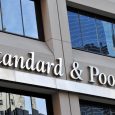News

Standard & Poor’s affirms Cyprus’ growth prospects, highlights risks from virus
Standard & Poor’s Global Ratings has affirmed its BBB-/A-3 long- and short-term foreign and local currency sovereign credit rating on Cyprus with a stable outlook.
The stable outlook incorporates Cyprus` robust growth prospects, improving public debt dynamics, and track record of running budgetary surpluses, according to the report released Friday, 6 March.
It also takes into account Cyprus` high stocks of public and private debt and the inherent vulnerability of a small open economy, with an important tourism sector, to rising external shocks, including from the recent coronavirus outbreak.
“We could consider raising the ratings on Cyprus over the next two years if external risks abated significantly or the banking sector materially reduced its nonperforming exposures (NPEs) and financial conditions improved. We could also raise the ratings in the case of faster-than-expected deleveraging in the economy or improved external performance”, says S&P.
According to the report, the ratings are supported by Cyprus` wealthy economy, solid growth prospects, and policymakers` commitment to operating budgetary surpluses. The rating agency also sees positively the ongoing progress in restoring the banking sector`s health.
It anticipates policymaking will remain geared toward the reduction of macroeconomic vulnerabilities and improving the financial sector`s health.
It also notes that growth in Cyprus has been resilient at 3.2% in 2019, partly due to the economy`s ability to attract a steady flow of net immigration and projects that the economy will expand at a slower, but still solid, 2.5% over 2020-2023.
It adds that the labor market has been dynamic, with a continuously declining unemployment rate after it peaked in 2014. It also forecasts further declines to around 5.0% in the coming years, from 7.1% in 2019 and around 13.0% in 2016.
Foreign-financed investment activity is also likely to remain strong, supported by ongoing projects, particularly in residential properties, education, health, and tourism infrastructure.
